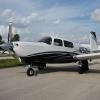Replace 3-blade with 2-blade Scimitar?
-
Members Online
- Dwb62
- AndreiC
- Rick Junkin
- Marc_B
- Parker_Woodruff
- N201MKTurbo
- RoundTwo
- jetdriven
- Ragsf15e
- MikeOH
- CCAS
- eman1200
- ta2too
- bluehighwayflyer
- 1980Mooney
- 65MooneyPilot
- Deb
- boldt35
- Utah20Gflyer
- 00-Negative
- redbaron1982
- peterl
- M20S Driver
- Jarerh
- exM20K
- Mellow_Mooney
- spistora
- TangoTango
- ArtVandelay
- Greg Ellis
- Andy95W
- ElkoRandy20J
- FlyingScot
- Slick Nick
- DanM20C
- Denis Mexted
- 885EW


Recommended Posts
Join the conversation
You can post now and register later. If you have an account, sign in now to post with your account.